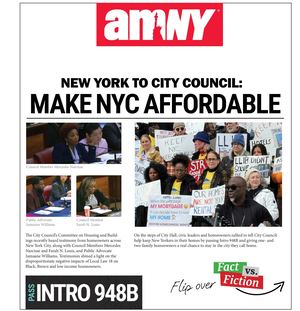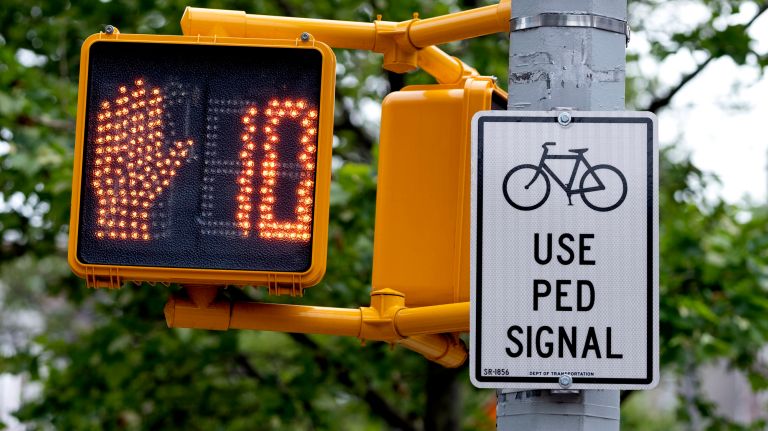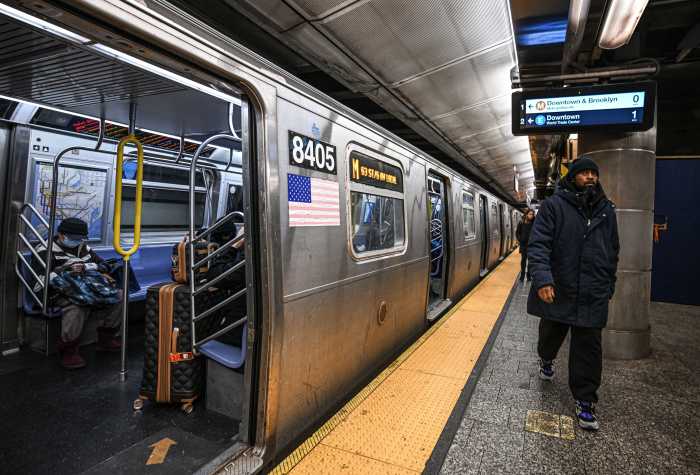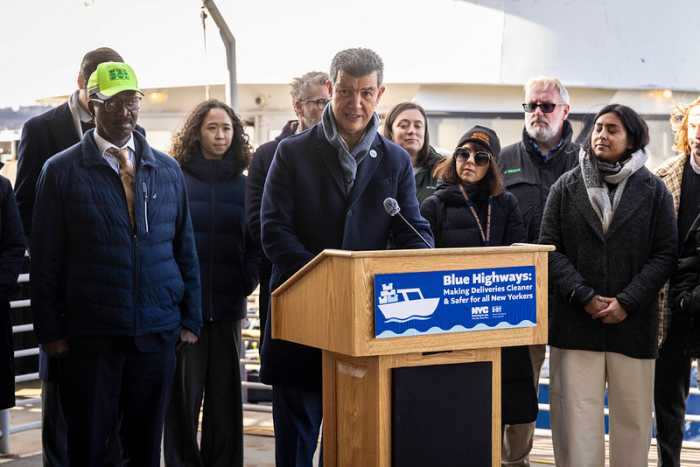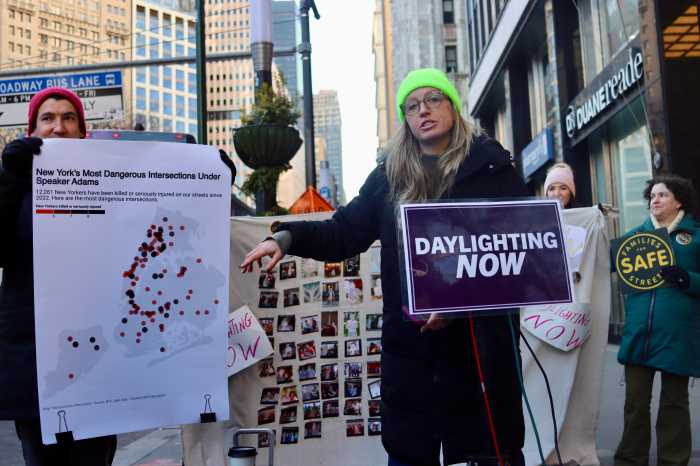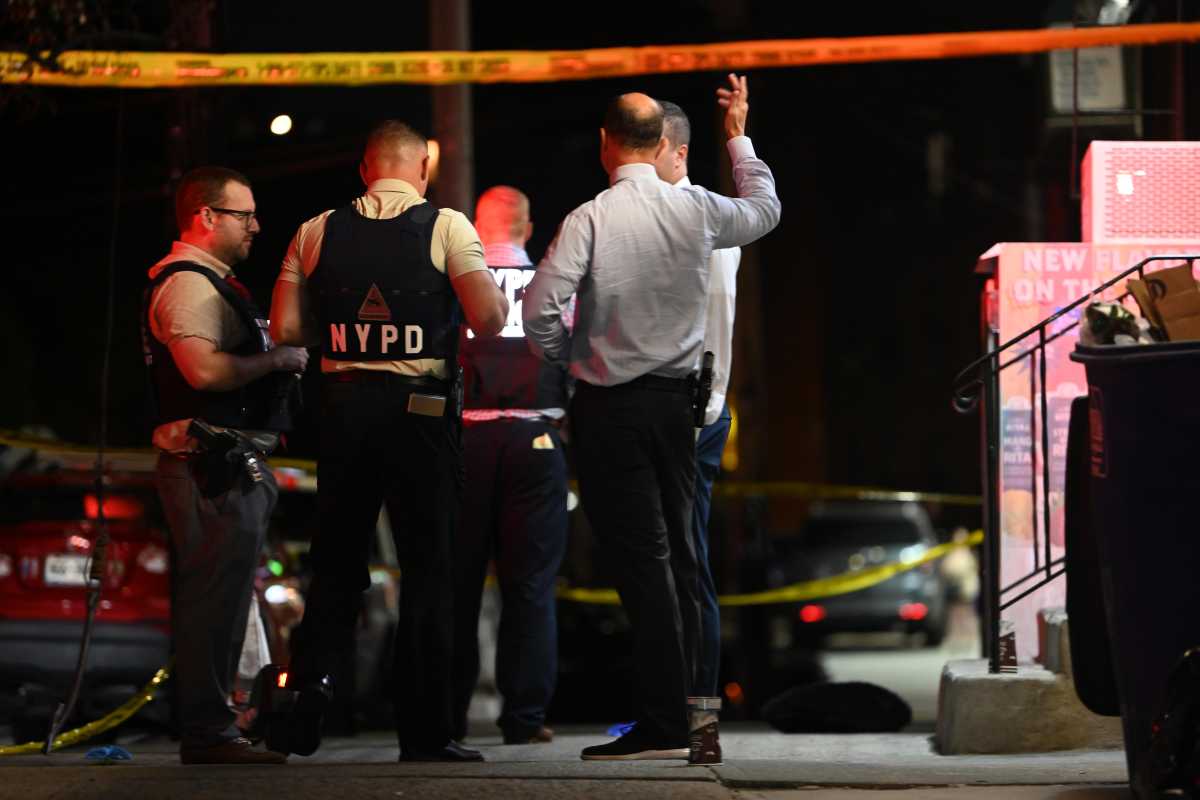
Cycling can be made safer by allowing bicyclists to follow pedestrian signals — and not traffic lights — according to a new study.
New York City has installed what it calls “Leading Pedestrian Intervals” at thousands of its traffic intersections. The intervals give pedestrians a crossing “green light” several seconds before parallel traffic gets the go-ahead. The idea is that the extra time makes those walking more visible to turning drivers. The safety measure was also extended to cyclists at 50 intersections around Manhattan, Brooklyn and Queens as part of a pilot program, according to a new city study obtained by amNewYork.
Mayor Bill de Blasio’s administration is now backing a City Council bill that would turn the pilot concept into law at the 3,494 intersections where the “Leading Pedestrian Intervals” have been installed as part of the Vision Zero safety initiative. (There are about 13,300 intersections with traffic lights in the city.)
“This study shows that we have another tool in the Vision Zero toolbox to make cycling in our city safer than ever,” said Seth Stein, a mayoral spokesman, in a statement supporting the bill from Brooklyn Councilman Carlos Menchaca.
“We [look] forward to working with Council Member Menchaca to pass his legislation and make this a reality,” Stein added.
Under the pilot program, launched in March last year, cyclists have been permitted to follow crosswalk signals at 50 intersections around Manhattan, Brooklyn and Queens. The city found that total traffic injuries decreased when it compared data from intersections over seven months — between April and October 2018 — with the previous three-year average over the same time period. The report documented a roughly 27 percent drop in injuries, from about 75 injuries to 55.
While the sample size is small, it’s already common practice for cyclists to roll through red lights alongside pedestrian crossings, the city and proponents of the bill argue. Before the pilot began,Department of Transportation crews monitored six intersections in Manhattan and Brooklyn and found that 240 of 301 cyclists at red lights rolled through during the pedestrian crossing phase — about 80 percent of riders.
“This confirmed what cyclists already know … which is, getting ahead of cars and trucks makes us safer. That’s it. We already knew that and the study confirmed it,” Menchaca said. “[Intersections] are a place where many crashes happen. and we’re focused, on the council side, on creating safe bike infrastructure.”
Menchaca first introduced his legislation in 2016. During the last session, the de Blasio administration was mostly supportive, but wanted to carve out instances where bikes were required to follow traffic lights at LPI intersections. Menchaca has reintroduced the bill this session, and is pushing to get the legislation heard and voted on.
“(Council Speaker Corey Johnson) is a strong supporter of breaking the car culture by making it easier and safer to bike and walk around the city, and this bill is consistent with that vision,” said Jennifer Fermino, a spokeswoman for the speaker, in a statement. “He looks forward to reviewing this report and will monitor this bill closely as it moves through the legislative process.”
DOT Commissioner Polly Trottenberg said in a statement that LPIs have been a “key factor” in reducing pedestrian deaths over the last four years, and that she sees potential in expanding the feature for cyclists.
“Council Member Menchaca recognized that people on bicycles were already using these same LPIs to proceed safely through intersections, and this pilot has now made it clear that these head starts offer the same safe and effective protection for cyclists, too,” Trottenberg said.
While Menchaca believes the bill will effectively legalize already typical behavior, it could be difficult convincing New Yorkers that it’s the right approach.
“I don’t know if that will work. People barely obey the regular signals now,” said Auburn MacLauchlan, 21, a dog trainer from East New York, who bikes once a week.
Harry Heissmann, an interior designer from Brooklyn Heights, complained of errant cyclists and wondered if the concept would just add confusion.
“Once you look one way, and then the other way, and then get on the crosswalk, there is always some bike that comes out of nowhere,” Heissmann said.
Still, driver behavior is the cause of the majority of traffic deaths in the city, according to NYPD and DOT data. The city has responded by taking an especially close look at intersections where the majority of cycling deaths and serious injuries have occurred, according to DOT. As for pedestrians, left-turning vehicles alone accounted for 33 percent of pedestrian injuries as well as roughly 18 percent of all pedestrian deaths in 2018.
Menchaca said his bill would preserve pedestrian safety by granting them the right of way — meaning turning cyclists following the pedestrian signal would still have to wait for a clear crosswalk.
“This bill, with super low cost, gives every bicyclist overnight a safer way to cross the intersection while keeping pedestrians safe, as well,” Menchaca said, “by giving them the right of way at intersections as they cross.”
